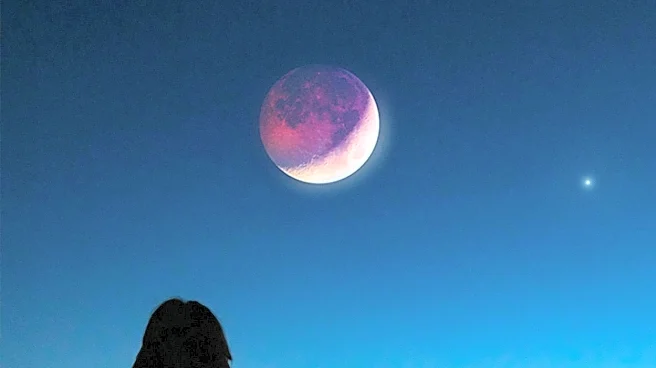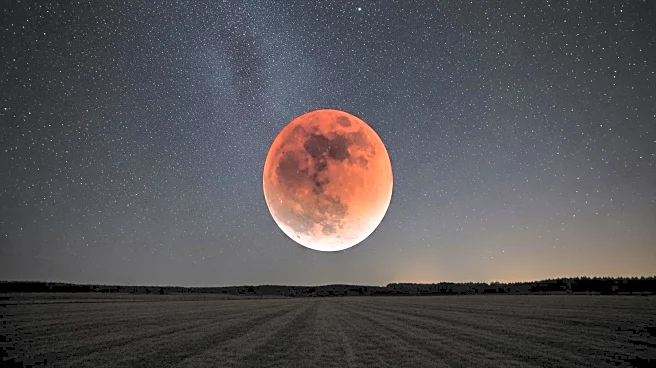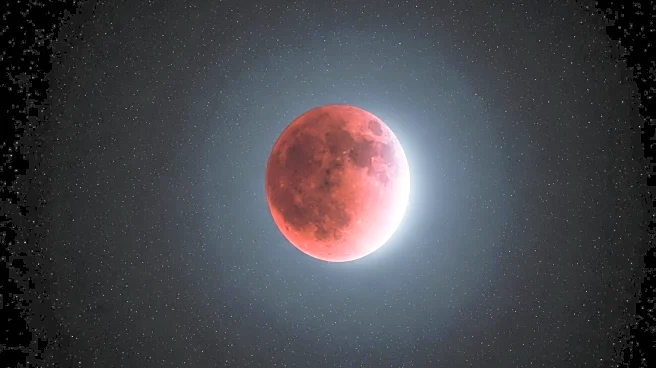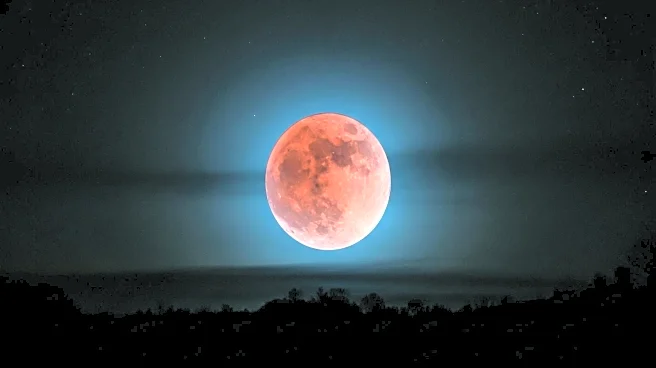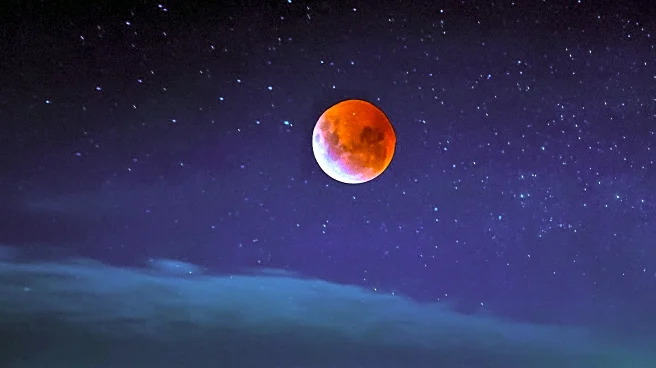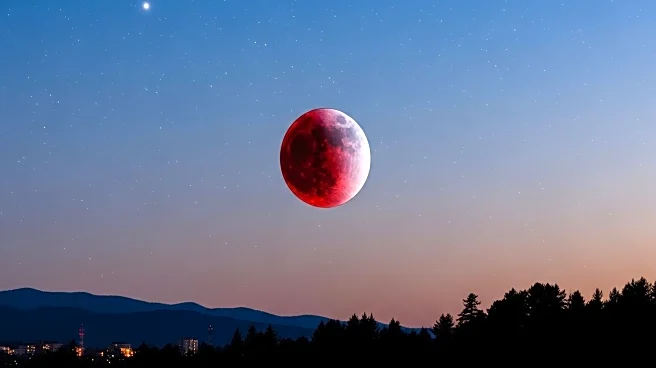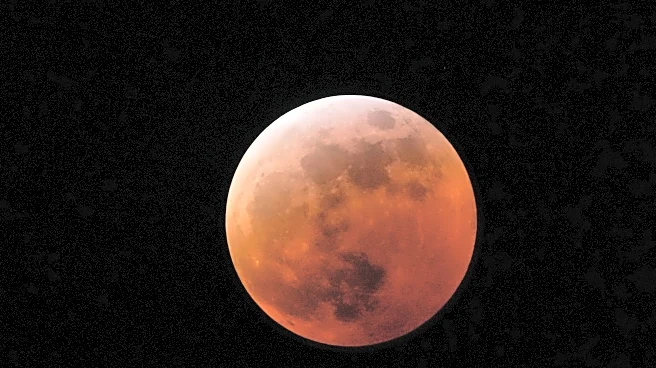What's Happening?
A total lunar eclipse, known as a blood moon, is set to occur this weekend, offering a spectacular view to skywatchers across Asia, Australia, Africa, and Europe. During this event, the moon will take on a deep red hue as Earth's shadow covers its surface. This phenomenon is safe to observe without protective eyewear, unlike solar eclipses. The eclipse will be particularly dramatic as the moon passes through the darkest part of Earth's shadow, known as the umbra, resulting in a rich rusty orange or brownish-red coloration. Unfortunately, viewers in the Americas will miss out on this celestial event.
Why It's Important?
Lunar eclipses, especially blood moons, are significant astronomical events that captivate skywatchers and scientists alike. They offer a unique opportunity to observe the dynamics of celestial bodies and Earth's shadow. While this particular eclipse will not be visible in the Americas, it highlights the global nature of astronomical phenomena and the interconnectedness of the world in sharing such experiences. Enthusiasts in the Americas can look forward to a similar event in March 2026, fostering anticipation and interest in astronomy.
What's Next?
For those in the Americas eager to witness a blood moon, a total lunar eclipse visible from North America is scheduled for March 2-3, 2026. In the meantime, enthusiasts can follow live coverage and updates through Space.com's dedicated lunar eclipse live blog and livestream events, ensuring no one misses a moment of this celestial marvel.


